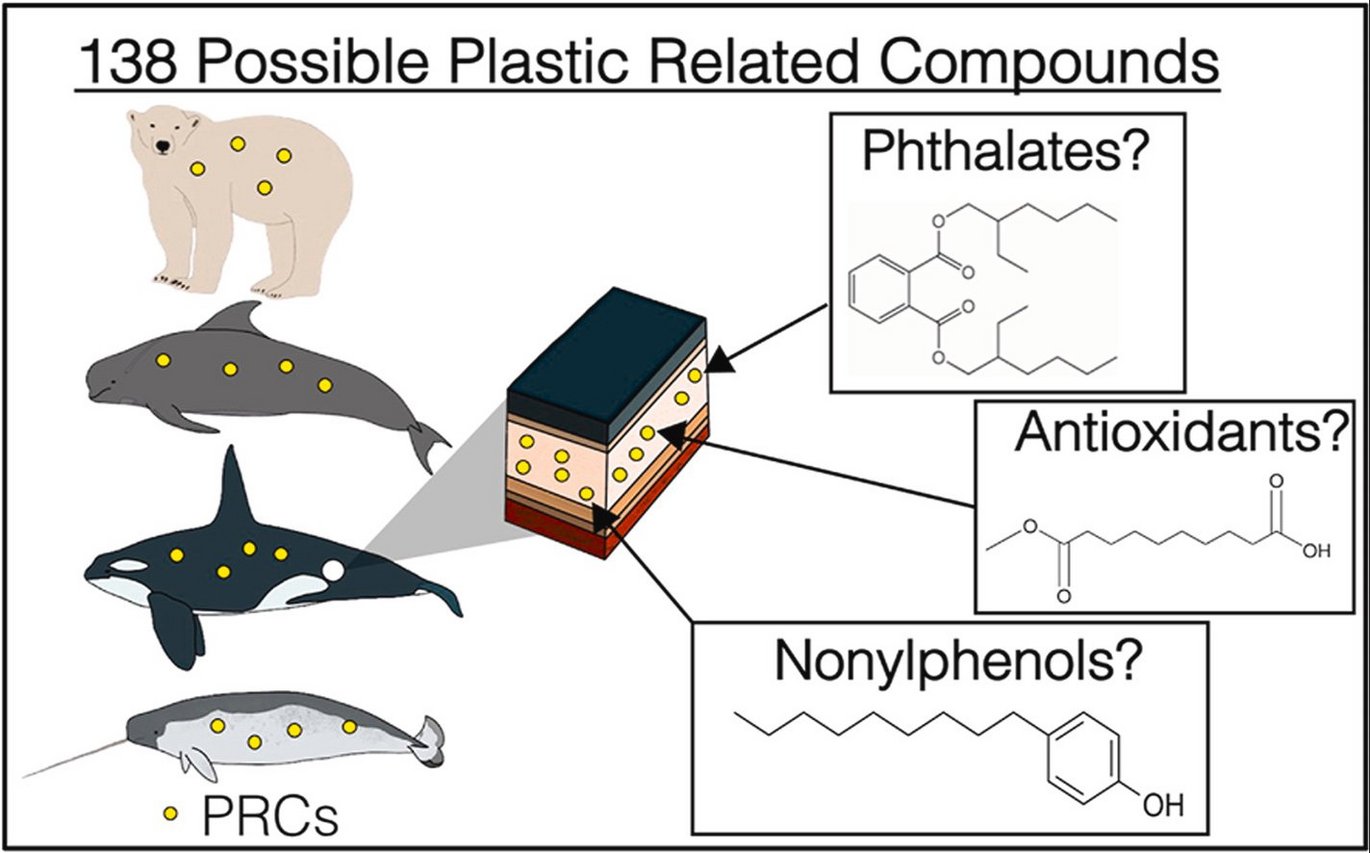Nontarget and suspect screening reveals the presence of multiple plastic-related compounds in polar bear, killer whale, narwhal and long-finned pilot whale blubber from East Greenland
New publication by Pedersen, A. F., Bayen, S., Liu, L., Dietz, R., Sonne, C., Rosing-Asvid, A., Ferguson, S. H., & McKinney, M. A.

Abstract:
The monitoring of legacy contaminants in sentinel northern marine mammals has revealed some of the highest concentrations globally. However, investigations into the presence of chemicals of emerging Arctic concern (CEACs) and other lesser-known chemicals are rarely conducted, if at all. Here, we used a nontarget/suspect approach to screen for thousands of different chemicals, including many CEACs and plastic-related compounds (PRCs) in blubber/adipose from killer whales (Orcinus orca), narwhals (Monodon monoceros), long-finned pilot whales (Globicephala melas), and polar bears (Ursus maritimus) in East Greenland. 138 compounds were tentatively identified mostly as PRCs, and four were confirmed using authentic standards: di(2-ethylhexyl) phthalate (DEHP), diethyl phthalate (DEP), di(2-propylheptyl) phthalate (DPHP), and one antioxidant (Irganox 1010). Three other PRCs, a nonylphenol isomer, 2,6-di-tert-butylphenol, and dioctyl sebacate, exhibited fragmentation patterns matching those in library databases. While phthalates were only above detection limits in some polar bear and narwhal, Irganox 1010, nonylphenol, and 2,6-di-tert-butylphenol were detected in >50% of all samples. This study represents the first application of a nontarget/suspect screening approach in Arctic cetaceans, leading to the identification of multiple PRCs in their blubber. Further nontarget analyses are warranted to comprehensively characterize the extent of CEAC and PRC contamination within Arctic marine food webs.
